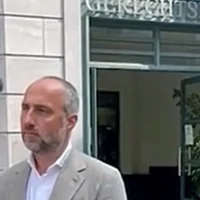Knokke-Heist (The Brussels Morning Newspaper): Ingrid Caeckaert was murdered in 1991 and her case remains unsolved despite having the killer’s DNA. New DNA technology allows police to seek familial matches from previous suspects.
For over thirty years investigators have had the killer’s DNA in the case of Ingrid Caeckaert a 26-year-old who was murdered on March 16 1991 in Heist. Ingrid was attacked with over sixty stab wounds in her apartment building. The attacker also injured himself leaving a bloody handprint on the building’s entrance door and drops of blood in several nearby streets. Despite this evidence the perpetrator has never been identified.
Can new DNA technology finally solve ingrid Caeckaert’s 1991 murder?
The murder of Ingrid Caeckaert remains unsolved despite having the killer’s DNA for over thirty years. The DNA evidence revealed that the perpetrator was a Western man who was likely in his thirties at the time of the crime making him around sixty years old now. Despite extensive efforts to match this DNA with various suspects no conclusive identification has been made.In a new push to resolve the case investigators from the federal police in Bruges have started reaching out to all 150 men who were previously questioned during the initial investigation. These men who live throughout Belgium and even in Luxembourg are being asked to provide new DNA samples. This effort aims to finally make a match and uncover the identity of the murderer bringing closure to the case of Ingrid Caeckaert.
The new DNA law that came into effect in March 2024 allows the police to conduct more detailed DNA analysis. With advancements in technology they can now use the Y chromosome for kinship research. This means that if a male suspect left genetic material at a crime scene like blood investigators can track down his identity through his relatives. By collecting DNA samples from previous suspect, the police might be able to identify a family member who could be the perpetrator.Celine D’Havé from the Ghent public prosecutor’s office mentioned that they can’t directly ask people to provide DNA samples voluntarily for analysis. However through the DNA profiling of suspects they can extract the Y-chromosome profile which might help identify the close relatives of the male perpetrator. One of the men who had already undergone a DNA test at the request of the investigating judge in Bruges is Marc Gevaert (57) serving a life sentence for a double robbery-murder. He said he had an alibi he was in Amsterdam that day.




